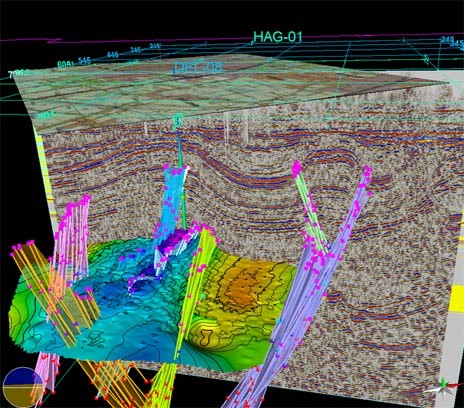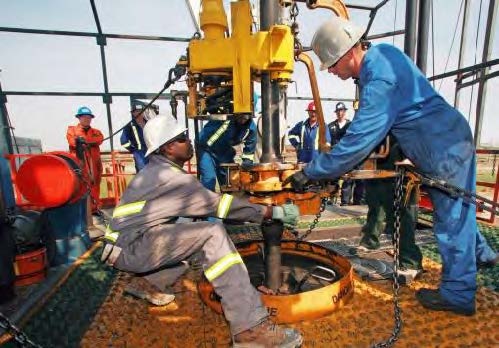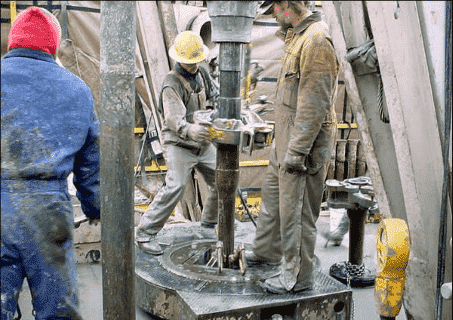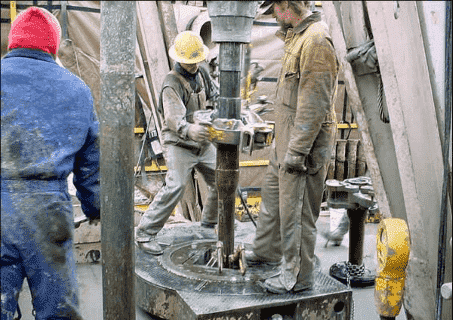COURSE OVERVIEW
DE0521 : Quantative Interpretation Using Seismic Data

OVERVIEW
| COURSE TITLE | : | DE0521 : Quantative Interpretation Using Seismic Data |
| COURSE DATE | : | Nov 02 - Nov 06 2025 |
| DURATION | : | 5 Days |
| INSTRUCTOR | : | Mr. Konstantin Zorbalas |
| VENUE | : | Dubai, UAE |
| COURSE FEE | : | $ 8000 |
| Request For Course Outline | ||
Course Description
Creation of shareholder value should be at the heart every business decision. This course is geared towards explorationists who are involved in screening seismic data for possible leads that they develop into prospects. This is a hands-on course where the instructor spends as little time on lectures as possible and the bulk of the time is spent interpreting seismic lines. These lines have been collected from oil producing basins worldwide and provide textbook examples of structural and stratigraphic geometries.
The course is evenly divided between the seismic expression of structural styles and seismic stratigraphy. After spending minimal time on acquisition and background theory participants will be made acutely aware of impedance and resolution and identification of processing errors and how important it is to understand these before interpretation. The participants will be introduced to the structural complexity associated with fold and thrust terrains, extensional systems and various types of wrench faulting and salt/mud related deformation.
The seismic stratigraphy portion of the course not only covers the practice of sequence stratigraphy using seismic data (AAPG Memoir 26), but also spends quite a bit of time on seismic facies analysis in cross-sectional view. Through lots of exercises by the end of the course everyone should be proficient at sequence analysis on seismic lines and be able to interpret depositional environments and net:gross using seismic facies analysis. The course will also introduce participants to the world of seismic geomorphology, attribute analysis and direct hydrocarbon indicators with an emphasis on unconventional resource plays such as fractured shale gas reservoirs and tight-gas sandstones.
Participants are strongly urged to bring paper copies of their own seismic data to work on. These data will not be shared with anyone and will only be reviewed by the instructor.
link to course overview PDF
The course is evenly divided between the seismic expression of structural styles and seismic stratigraphy. After spending minimal time on acquisition and background theory participants will be made acutely aware of impedance and resolution and identification of processing errors and how important it is to understand these before interpretation. The participants will be introduced to the structural complexity associated with fold and thrust terrains, extensional systems and various types of wrench faulting and salt/mud related deformation.
The seismic stratigraphy portion of the course not only covers the practice of sequence stratigraphy using seismic data (AAPG Memoir 26), but also spends quite a bit of time on seismic facies analysis in cross-sectional view. Through lots of exercises by the end of the course everyone should be proficient at sequence analysis on seismic lines and be able to interpret depositional environments and net:gross using seismic facies analysis. The course will also introduce participants to the world of seismic geomorphology, attribute analysis and direct hydrocarbon indicators with an emphasis on unconventional resource plays such as fractured shale gas reservoirs and tight-gas sandstones.
Participants are strongly urged to bring paper copies of their own seismic data to work on. These data will not be shared with anyone and will only be reviewed by the instructor.
TRAINING METHODOLOGY
This interactive training course includes the following training methodologies:
LecturesPractical Workshops & Work Presentations
Hands-on Practical Exercises & Case Studies
Simulators (Hardware & Software) & Videos
In an unlikely event, the course instructor may modify the above training methodology for technical reasons.
VIRTUAL TRAINING (IF APPLICABLE)
If this course is delivered online as a Virtual Training, the following limitations will be applicable:
| Certificates | : | Only soft copy certificates will be issued |
| Training Materials | : | Only soft copy materials will be issued |
| Training Methodology | : | 80% theory, 20% practical |
| Training Program | : | 4 hours per day, from 09:30 to 13:30 |
RELATED COURSES

DE0111 : Advanced HPHT Well Intervention Operation
- Date: Dec 21 - Dec 25 / 3 Days
- Location: Doha, Qatar
- Course Details Register

DE0429 : Oil Field Manager (OFM) Fundamentals, Production Forecasting Analysis and Intermediate
- Date: Dec 16 - Dec 20 / 3 Days
- Location: Dubai, UAE
- Course Details Register

DE0100 : Well Completion Design & Operations, Well Stimulation and Workover Planning
- Date: Dec 21 - Dec 25 / 3 Days
- Location: Muscat, Oman
- Course Details Register

DE0100 : Workovers & Completions
- Date: Dec 21 - Dec 25 / 3 Days
- Location: Muscat, Oman
- Course Details Register
